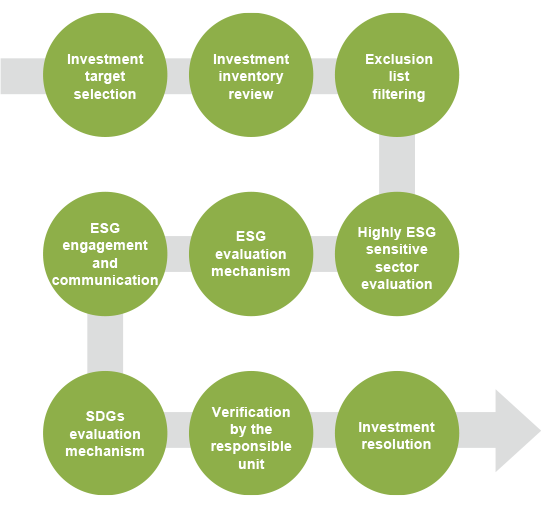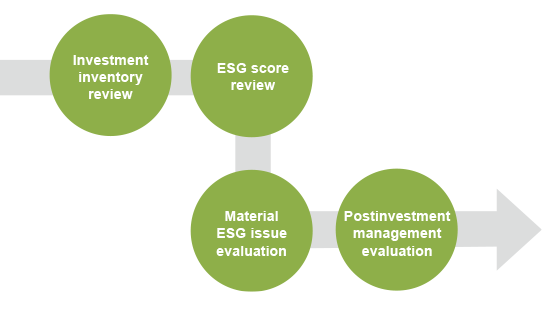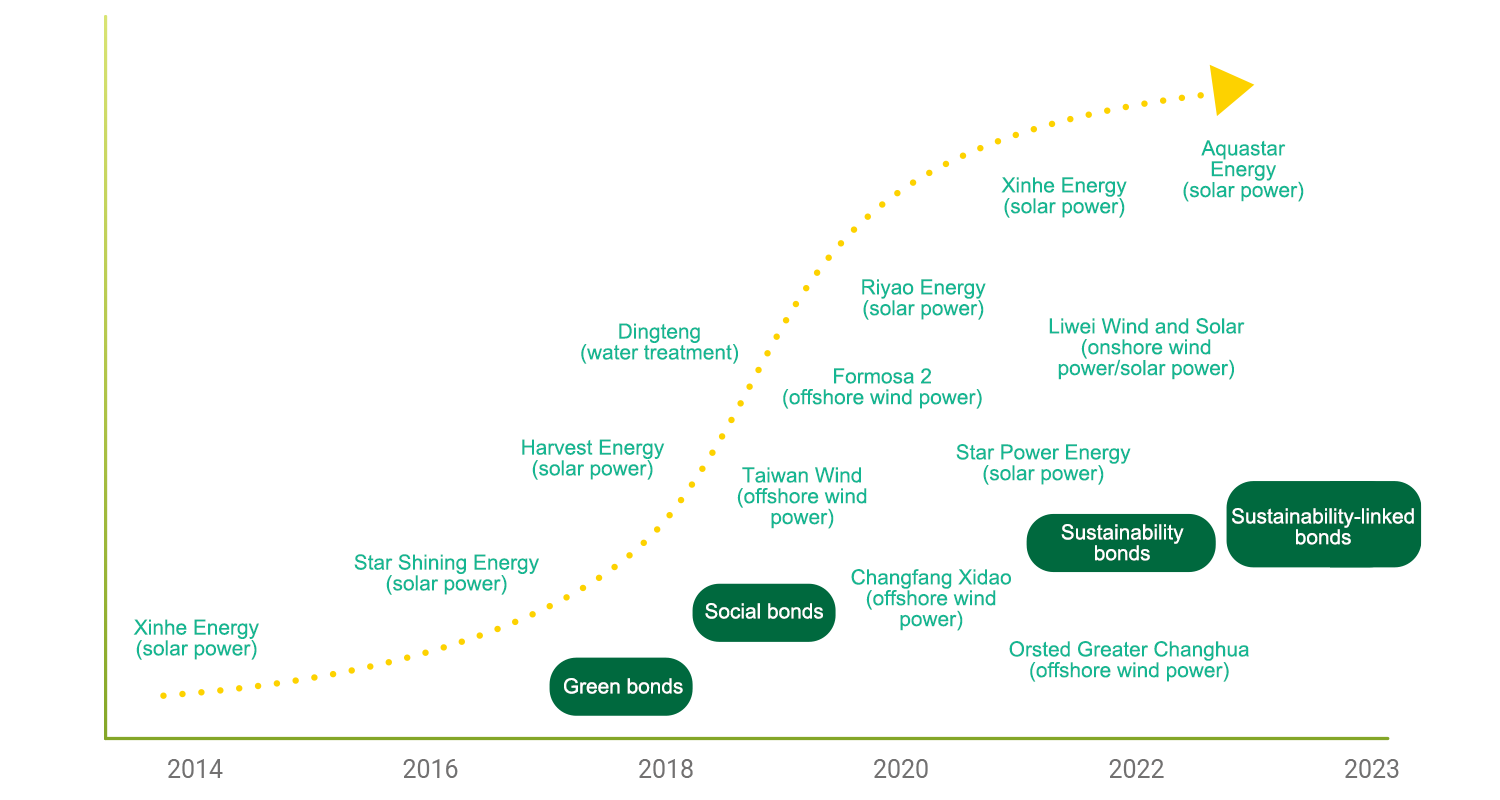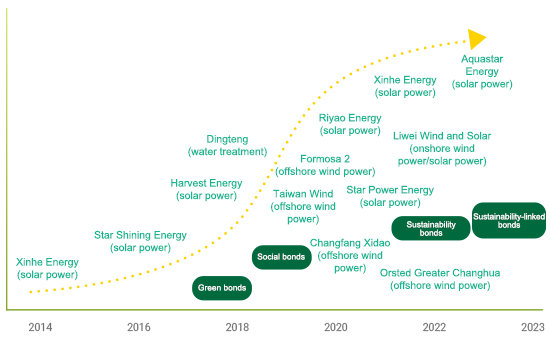We believe that enterprises have a social responsibility to maintain ecological balance and support resource regeneration. To these ends, Taiwan Life has introduced international standards on environmental certification, actively supports energy transformation and the localization of green industry through responsible investment, and is increasing its investment in renewable energy in order to protect the environment and foster a sustainable homeland.
In terms of social care, the Company follows the footsteps of CTBC Holding’s approach to community engagement, not only to expanding its own business but also to grow together with the community and the environment.
Responsible Investment Process
Taiwan Life has formulated corresponding responsible investment procedures for different investment types and determines whether to proceed with investments or reduce investments based on the evaluation results. The scope of responsible investment covers stocks, bonds, funds, lending, building under construction (BUC) cases, transaction counterparties, and investment service brokers. In 2023, a total of 214 investees and transaction counterparties were invested in/loaned to, according to the responsible investment assessment results.
● Pre-investment process


● Post-investment process


Responsible Investment and Financing Results
In recent years, Taiwan Life’s investment portfolio has focused primarily on long-term holding and stable profit-making investees (domestic and foreign bonds), hoping to provide reassuring and stable investment protection for the insured and to safeguard their rights and interests. In 2023, the total investment assets of Taiwan Life were approximately NT$1.96 trillion.
In terms of sustainable investments, Taiwan Life adheres to the asset allocation principles of its overall investment portfolio, focusing on domestic and foreign bonds and project financing. As of 2023, the cumulative approved investments and loans to be used for sustainable development totaled NT$66.702 billion. The Company continues to proactively seek investees that meet sustainable development criteria in order to support the government’s Green Finance Action Plan 3.0 and promote green energy investment.
Green Finance
Taiwan Life actively supports the government's green energy policy, in particular the wind power/photovoltaic industry and the power system and energy storage industry among the 12 key industries listed in Taiwan's Pathway to Net-Zero Emissions in 2050. As of the end of 2023, the Company had cumulatively invested NT$15.847 billion in the green energy and renewable energy industries, which are listed among the six core strategic industries, and it continued to add new investment and financing projects in 2023.
Our goal is to lead the insurance industry and to support Taiwan in the process. We were the first Taiwanese life insurance operator, as well as the first in Asia, to engage in a syndicated loan for offshore wind power. In addition, by being dedicated to creating positive impacts related to the SDGs, we are focused on the development of renewable energy. As of the end of 2023, loans that were applicable for financing and that met the criteria for forward-thinking economic activities in the Guidelines for the Determination of Sustainable Economic Activities accounted for approximately 35% of all loans, helping mitigate the effects of climate change through clean, renewable energy.
Our Changfang & Xidao Offshore Wind Farms involvement adopts a dual-track model of both investing and loans, thereby strengthening the level of participation that we as a life insurance operator have in infrastructure construction. The project, has also created many job opportunities, promoted regional development, and maintained positive interactions with the local residents, who joined the government, international wind power developers, and the local finance sector to realize the vision of renewable energy development in Taiwan.
● Green Investment Project
In 2022, we invested in a new company, Aquastar Energy Corp., whose “fishery and electricity symbiosis” facility is expected to deliver 75 MW. It focuses on the dual-use of land for both power generation and aquaculture. The project features a combination of power generation and aquaculture operations, and also aims to enhance scientific aquaculture through photovoltaic investment. It will optimize recirculating aquaculture systems, reduce groundwater extraction that causes land subsidence, and promote sustainable development in aquaculture.



